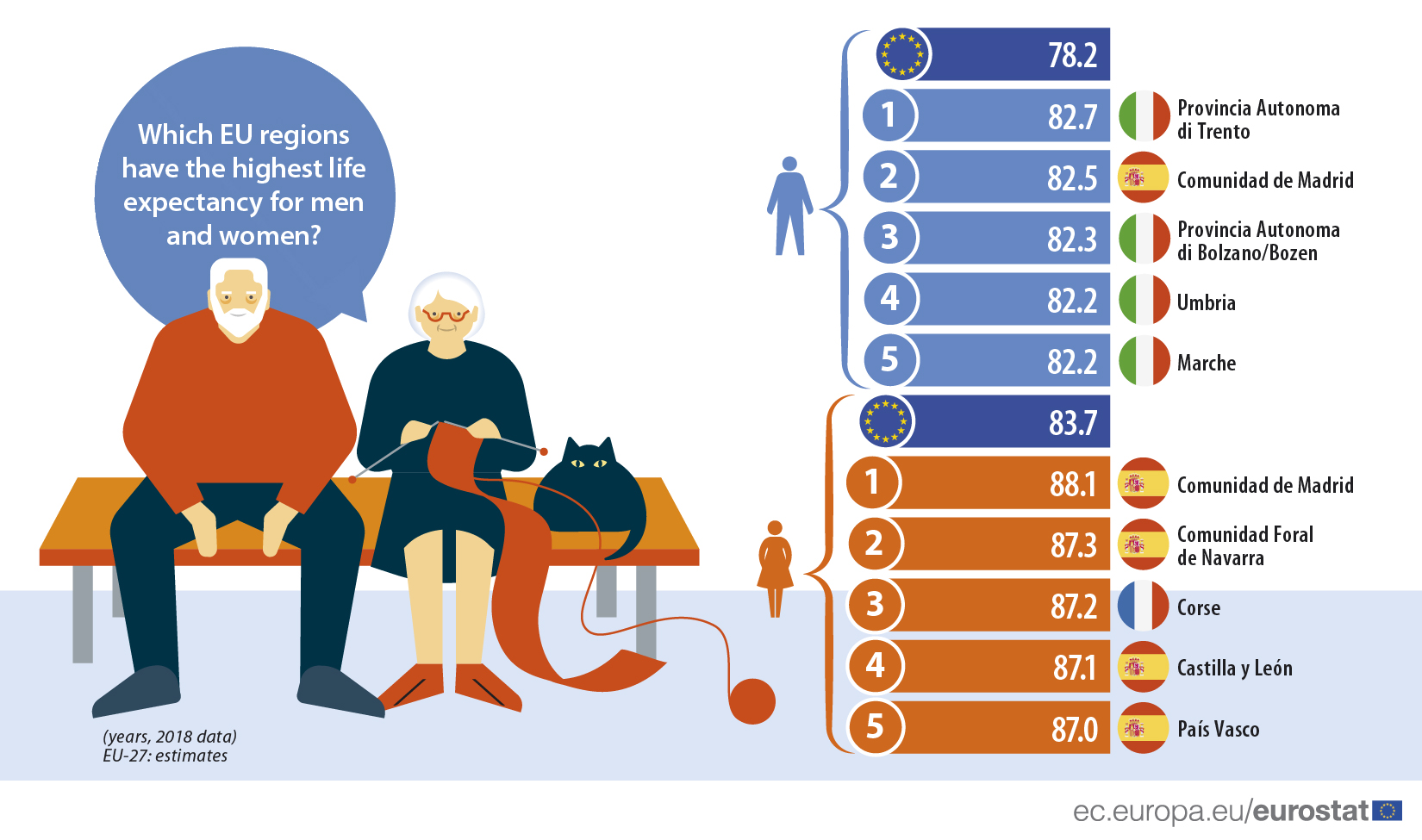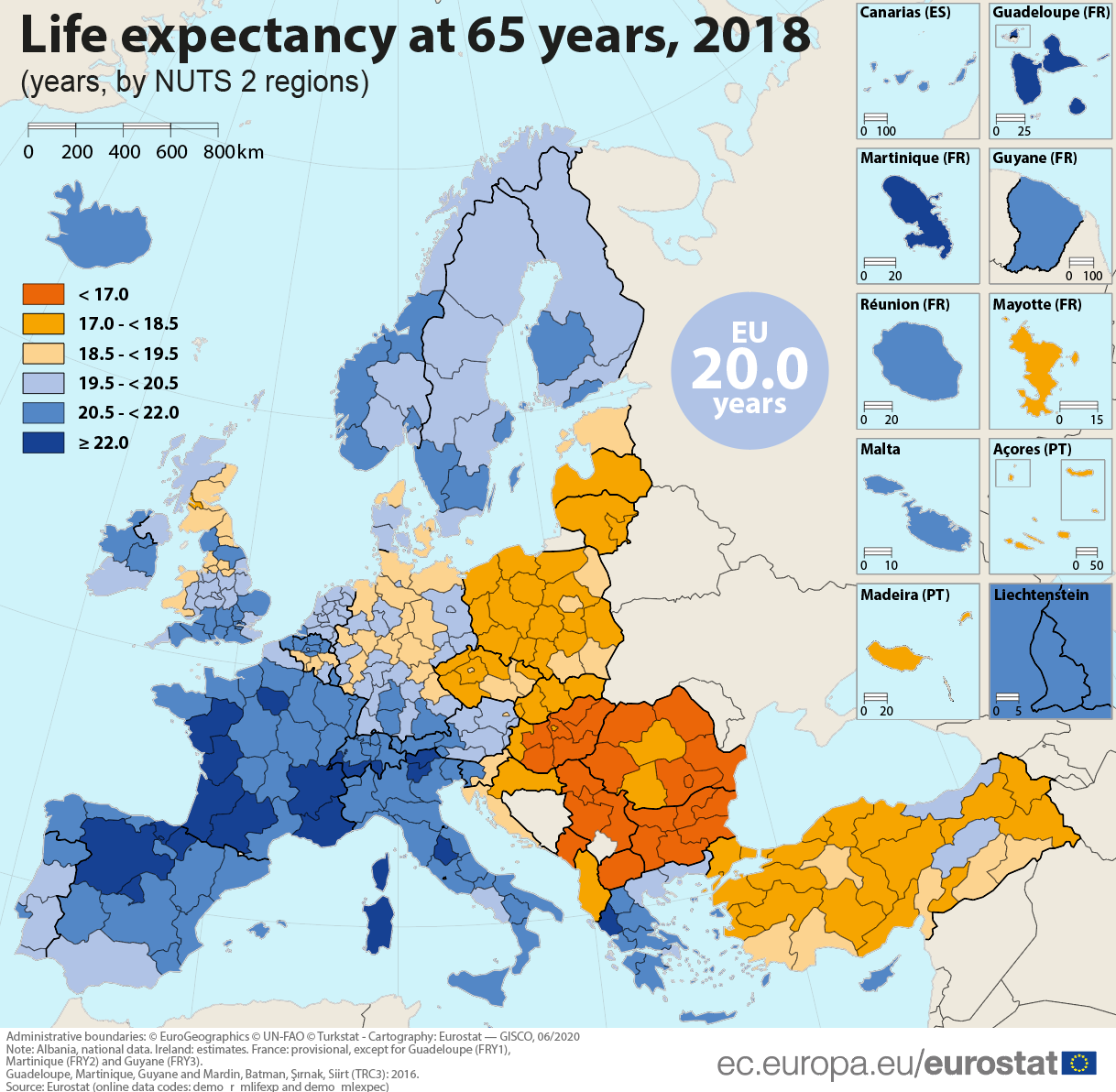In 2018, the life expectancy of a newborn in the EU was 81.0 years. This figure was 5.5 years higher for women (83.7 years) than men (78.2 years).
Similarly, female life expectancy was higher than male life expectancy in every NUTS level 2 region with available data.
Female life expectancy highest in several regions across Spain and France
In 2018, the 10 regions in the EU with the highest levels of female life expectancy at birth were all located in Spain or France. The Spanish capital region had the highest female life expectancy (88.1 years), while the top 10 regions were completed by six more Spanish regions and three French regions.
Some of the highest levels of male life expectancy at birth were recorded in northern and central Italy, with a peak of 82.7 years in Provincia Autonoma di Trento.
Source datasets: demo_r_mlifexp and demo_mlexpec
On average, a person aged 65 years living in the Comunidad de Madrid could expect to live a further 23.2 years
In 2018, an EU resident who had survived to the age of 65 could expect to live, on average, a further 20.0 years. The highest levels of life expectancy at this age were recorded in a band of regions running from northern Spain through much of western and southern France and into northern and central parts of Italy, as well as the north-western Greek region of Ipeiros.
A more detailed analysis of NUTS level 2 regions reveals that in 2018, a person at the age of 65 living in the Comunidad de Madrid could expect to live a further 23.2 years on average, while the corresponding figure for the Île de France was a further 23.0 years.
Source datasets: demo_r_mlifexp and demo_mlexpec
In contrast, life expectancy at 65 years was considerably lower in the vast majority of regions in eastern and Baltic Member States. The lowest levels of life expectancy at 65 years were recorded in two Bulgarian regions — where a 65 year-old person could expect to live, on average, a further 15.7 years.
Are you interested in health related indicators for regions across the EU? You can find it in the dedicated chapter of the Eurostat regional yearbook 2020 as well as in the corresponding maps in Statistical Atlas.
This news item marks the International Day of Older Persons (1 October).
Note: The European Union (EU) includes 27 EU Member States. The United Kingdom left the European Union on 31 January 2020. Further information is published here.
To contact us, please visit our User Support page.
For press queries, please contact our Media Support.



